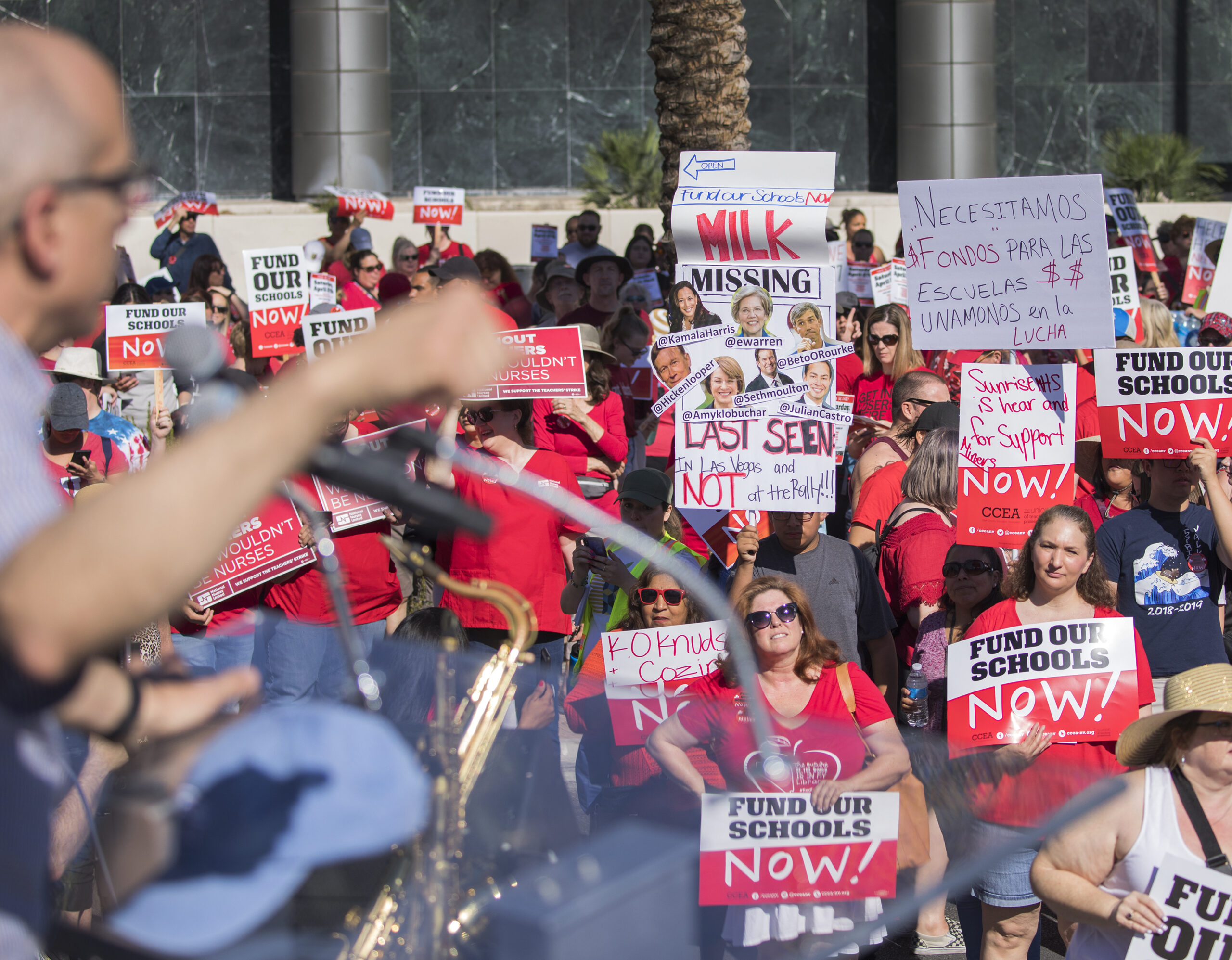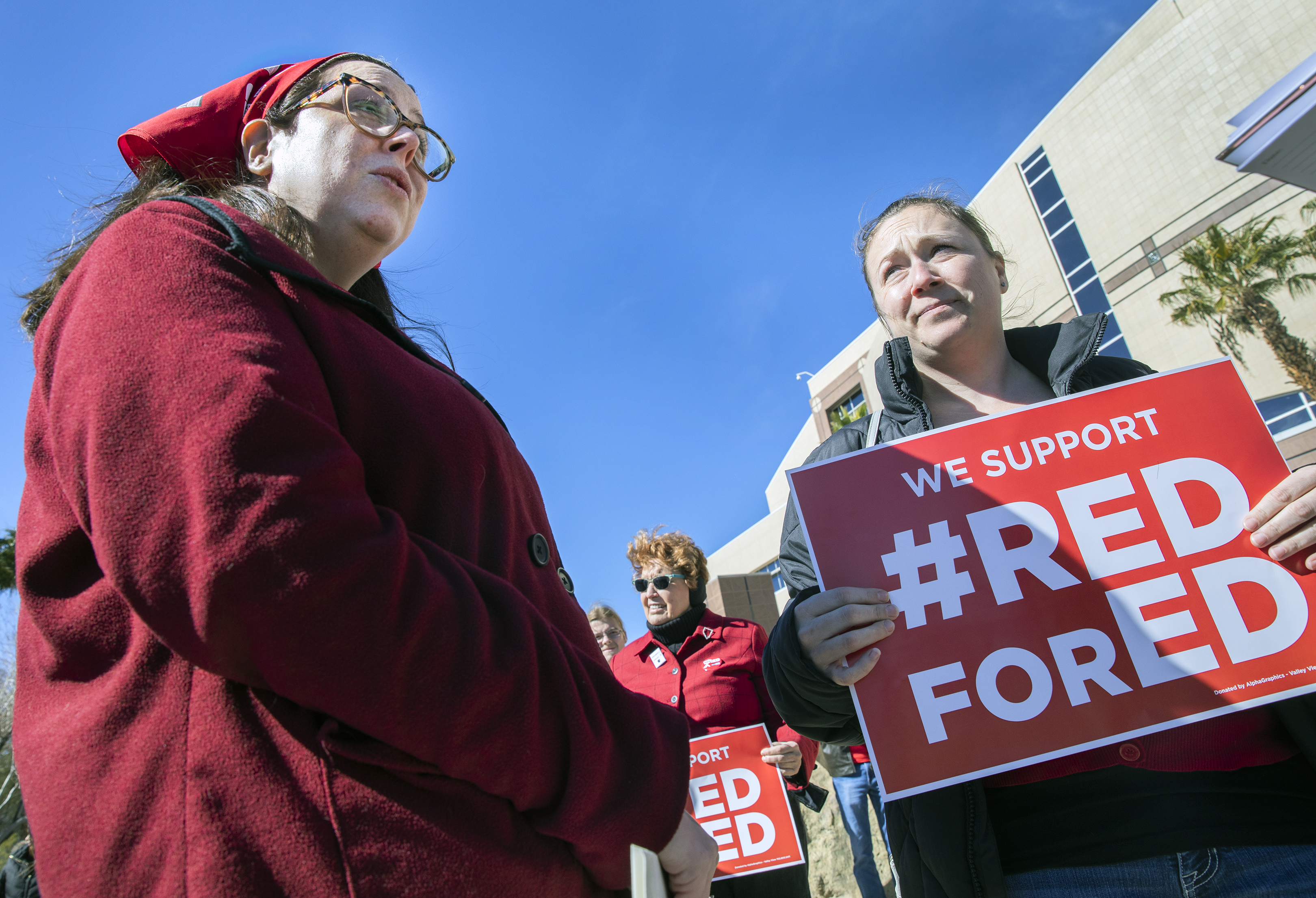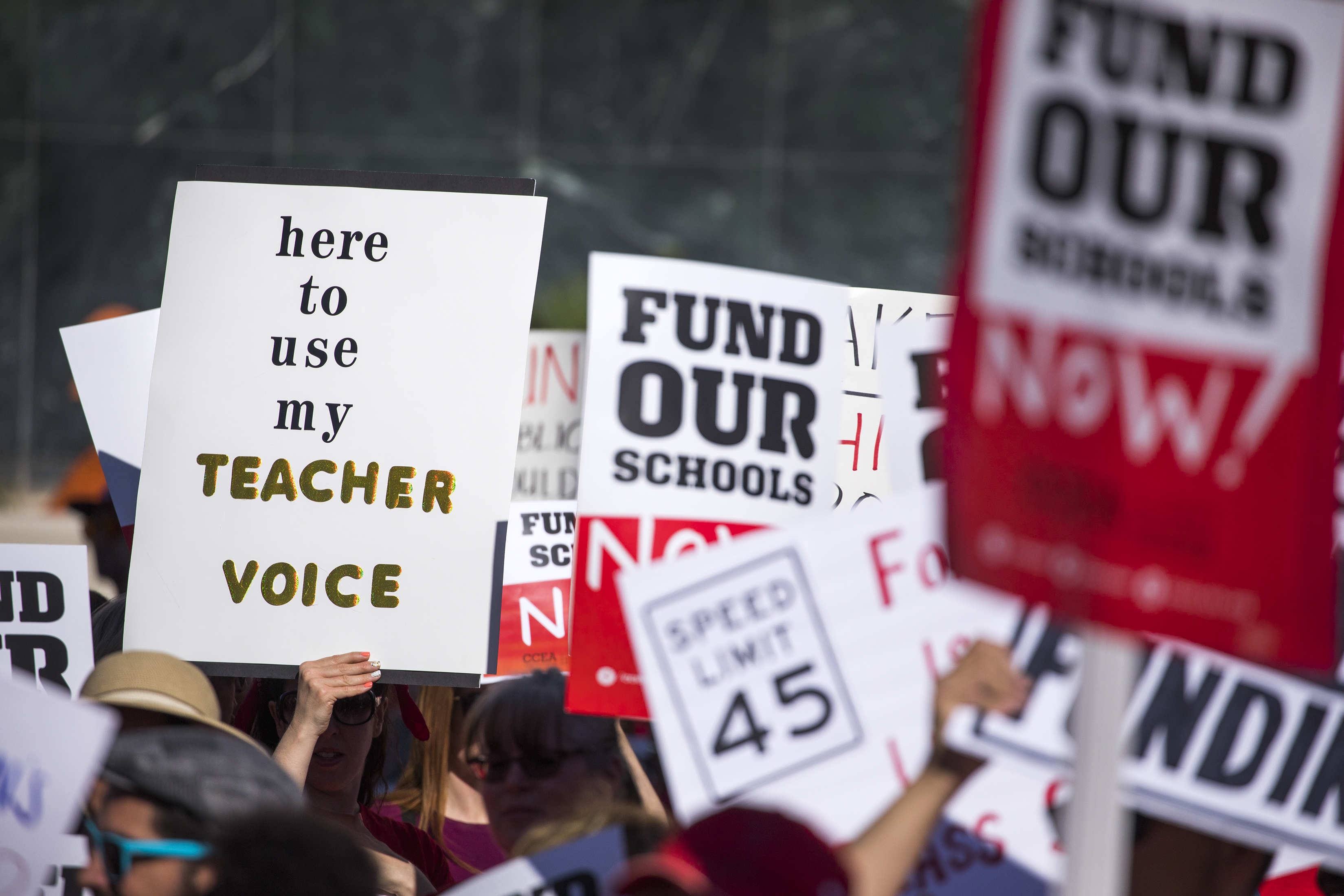Frustration mounts as school funding formula overhaul remains under wraps in waning days of session

It was supposed to be the biggest feat of the 2019 legislative session — an ambitious overhaul of Nevada’s 52-year-old education funding formula that once and for all would ensure schools are paid more for the extra cost of educating students with extra needs.
But with a little more than a month left in the 120-day session, the bill implementing the formula is still nowhere to be found. It’s agitating legislators and observers who fear that they’re missing a window of opportunity and that — with huge tasks such as finalizing a budget and passing a criminal justice reform measure yet to be done — they will not be able to put together a formula that will work for students and stand the test of time.
“We're losing accuracy. We're losing input. We're losing understanding and comprehension. We're losing deliberation, debate. We're losing all of the things we should be doing when we're talking about a policy change this dramatic and this significant,” Republican Sen. Ben Kieckhefer said about the delay. “We can have two joint hearings for five hours, right? But that doesn't mean we actually considered this proposal with the diligence that it's warranted.”
In a brief interview on Friday, Democratic Sen. Mo Denis said he still didn’t have a date for when the bill would drop. The process has been slowed by the fact that legislative staff had to finalize amendments on hundreds of bills before the Tuesday deadline to pass legislation out of its first house, he said.
And then there are technical concerns. Denis said he has help from some consultants and has looped in the chief financial officers of school districts, but there are a lot of moving parts that bill drafters are still refining.
“When you're changing something that's been in that long, that needs to be fixed, we want to try to get it as right as possible and also try to find a way moving forward to be able to make changes,” he said.
Some observers say the rub is that aside from promises for a 3 percent pay raise for school staff and 2 percent “merit” increases, there are no plans for a major infusion of cash into public education and Gov. Steve Sisolak has no plans to raise taxes. Denis has repeatedly said the “size of the pie” will not be growing but the distribution formula will change, which could create winners and losers, even though he has said his intent is that all districts are financially “held harmless” through the transition.
“I’d say they’re in a pickle — I mean, if it’s about not expanding the pie but changing the size of a slice … I don’t know how you please everybody. I just don’t know,” said John Vellardita, executive director of the Clark County Education Association.
In recent years, big goals have met their demise when the legislative clock ran out. In 2013, Democratic leaders including then-Senate Majority Leader Denis promised big tax overhauls but had not even introduced some of the key elements by mid-May, with three weeks left in the session.
“And it seemed so late to be able to really vet through something so critical, so important,” said Republican Sen. Scott Hammond. “It just never went anywhere because it took so long. I'm so afraid that this is also headed that way.”

Why the new funding formula?
The state’s existing funding formula, created in 1967 and called the “Nevada Plan,” is a complicated calculation that combines state and local revenues and doles money out based on each county’s demographics, transportation costs and other factors. (For more details, check out our explainer on the Nevada Plan.)
Critics say the distribution model is too confusing, is structured so that more education funding doesn’t always increase the total amount of money destined for education and doesn’t reflect the actual costs of educating children. A key criticism is that it does not apply more funds to students who need more resources to get up to speed — such as English language learners or children with disabilities — and thus does not reflect the demographics of a state that’s become far more diverse since 1967.
The state has taken steps towards a “weighted” funding formula that would supply schools with more money for each student they educate who has special needs. “Categorical” programs such as Zoom Schools, which get extra money because they have a high percentage of English learners, brought Nevada closer to that goal in 2013 and 2015, and SB178 of the 2017 session took another step forward by giving schools a $1,200 “weight” for each low-achieving student in a mid- to low-achieving school.
Last summer, legislators reviewed a study from the consulting firm Augenblick, Palaich and Associates (APA) that offered two possible solutions: a “successful schools model” that involves base funding of $5,988 per student, which is close to what Nevada offers now before adding any “weights,” or base funding of $9,238 per student, a figure derived from research and expert recommendations about adequate funding.
The latter recommendation is projected to cost at least $1.5 billion more each calendar year than the state is currently spending, and that is before factoring in any additional weights. Although that high price tag is daunting, groups including the Clark County School District and Educate Nevada Now said revamping the formula is their top priority for the session, and Sisolak has voiced support for the changes.
“The governor acknowledges that the decades-old Nevada plan no longer seems suited to meet the growing, fast-changing educational needs of our students as our state has experienced unprecedented growth,” his spokeswoman, Helen Kalla, said in a statement on Friday. “His administration continues to work with legislative leadership on immediate and long-term solutions for Nevada’s K-12 education system, including on developing legislation this session to begin to address our education funding formula.”
But the process is moving too slow for education advocates, who had higher expectations of what would be accomplished by this point because Democrats — many who have promised more money for schools — have control of both houses of the Legislature and the governor’s mansion for the first time in 20 years and don't have to navigate a divided government.
“I think everyone thought that this would be the session to see a major step forward, to see a new funding formula,” said Rebecca Garcia, president-elect of the Nevada PTA. “Instead it feels like we’re not even staying stagnant, it feels like we’re reverting. I mean, more was done in ‘15 and ‘17 under a Republican governor than what’s happening so far.”
Felicia Ortiz, a member of the Nevada State Board of Education, said she worries political considerations are preventing leaders from acting more boldly.
“I realize that some of these folks are just playing the political game because they want to get reelected in 2020 for redistricting purposes,” she said, referring to the Democrats wanting to retain control when new lines are drawn in the 2021 session. “But I feel like that’s putting adult priorities over children.”

Challenges
For some, the first red flags were when Sisolak said in his State of the State address that there would be no new taxes. Since then, the promises that he did make for education — including a 3 percent raise for all school staff — have come into doubt.
The Clark County Education Association is now calling for an additional $120 million annually to be poured into the district. That demand was front and center at a rally Saturday in downtown Las Vegas, timed to put pressure on lawmakers as the session heads to a close.
Vellardita said CCEA wants, at a minimum, any budget surplus projected from the Economic Forum on Wednesday to be applied to that issue. As for other places to find the money? He wants to look at whether some of the “categorical” programs launched by Gov. Brian Sandoval in 2015 that are funded outside the Nevada Plan and are restricted in nature can be swept to cover the other needs. His ideas included a new teacher bonus program and the Great Teaching and Leading Fund.
Critics of the “categorical” funding, like Vellardita, say they are inefficient because they provide funding to an entire school. All students at a Zoom School have access to extra interventions, even if they are not English learners, while English learners in schools with lower concentrations of students like them do not access Zoom services.
Sisolak articulated that position at an event with The Nevada Independent in January. Denis said in the new funding formula, “categoricals won't function like they do today, outside the funding formula.”
Still, the idea of reshuffling money going to Sandoval’s education initiatives, and sweeping the hundreds of millions of dollars each biennium from those programs into the base funding where it could be redistributed, strikes a nerve for some who point to their successes so far.
“My bottom line is that I don’t want to see any child get impacted by this,” said Ortiz, who said that while she supports a gradual and strategic move from categoricals to weighted funding, she fears too sharp a transition would reduce services to needy children and could constitute a civil rights violation. “I don’t want a kid who’s used to having a summer program or getting the benefit of a longer school day or a wellness center or some wraparound services, to suddenly come back to school next year and not have those services anymore.”
Hammond, a Republican and former school administrator, likes the concept of weighted funding but worries the state will get less bang for its buck if the categoricals disappear.
“The staff that's in the Zoom Schools, they know what's going on. They become very good at implementing the programs and that's the essential part — making sure that you're implementing with fidelity,” Hammond said. “That's what I worry about when you start to disperse all that institutional knowledge on how to do that program across a very large district like Clark County… I worry that we're diluting the impact.”
Aside from concerns about the fate of existing education initiatives, the formula could have geographical winners and losers. If more money flows to populous Clark County, would it be at the expense of smaller rural counties?
While it’s unclear how such adverse consequences can be avoided long-term without an infusion of new revenue, Denis and Sisolak have signaled it's on their minds.
The governor “also recognizes the challenges of trying to implement comprehensive changes to the long-established funding formula, and remains committed to making sure that students do not face unintended negative impacts as a result of such a large-scale change,” Kalla said. “He is committed to making decisions that move us toward a new statewide funding structure that is equitable for every student in every county.”

Moving forward
In the meantime, education leaders say they’re working on the much-anticipated bill.
“We are consistently in contact with Sen. Mo Denis, Sen. Joyce Woodhouse and other legislative leaders who are supportive of modernizing Nevada's 52-year-old funding formula,” Clark County School District spokeswoman Kirsten Searer said in an email. “We remain encouraged that a bill to update the funding formula will be introduced so we can have this important conversation statewide.”
In a talk with reporters on Wednesday, Democratic Assembly Speaker Jason Frierson disputed the characterization that the bill was late. He said it’s hard to finalize such a huge project before the Economic Forum, in which economists predict how much revenue the state will collect in the next two years. In 2017, the forum’s projection gave lawmakers $140 million more to work with than they expected at the start of the session.
“You don't change, you know, 50 years of funding practices overnight … we have an obligation to be thoughtful and careful about it to make sure that if we're going to make that change, we're going to do it in a way that will sustain for the next 50 years,” he said.
But he also suggested the forthcoming Senate bill is not the end-all, be-all.
“We're not putting all our eggs in that basket,” he said. “We are assessing ways to improve support for education. I'm moving forward and I think that we have to be fluid.”
Democratic Assembly Floor Leader Teresa Benitez-Thompson also pushed back on the notion that legislators are shying away from ambitious legislative projects this session.
“I look at each one of my members, and I don't see them as wallflowers,” she said. “I think they're smart, they're intelligent, they're advancing good public policy and I think the notion that they are doing anything but working their hardest to get good policy in place is — anything less than that is lost on me.”
Still, advocates are anxious as the clock counts down.
"We're very interested in seeing what's in the bill," said Chris Daly of the Nevada State Education Association. "NSEA is concerned about the chronic underfunding of public education in the state. We think that revisiting the funding formula is an excellent opportunity to take a look at whether [there is] sufficient funding of public education while also addressing issues of education equity."
As for Ortiz — she hopes that if nothing else, concern about their legacy will motivate lawmakers to finish strong on one of the most consequential pieces of legislation they'll ever work on.
“Since a couple of the senior legislators are in their last session or two, potentially, I wouldn’t want to be them leaving this legacy of not getting shit done,” she said.
Megan Messerly contributed to this story.
